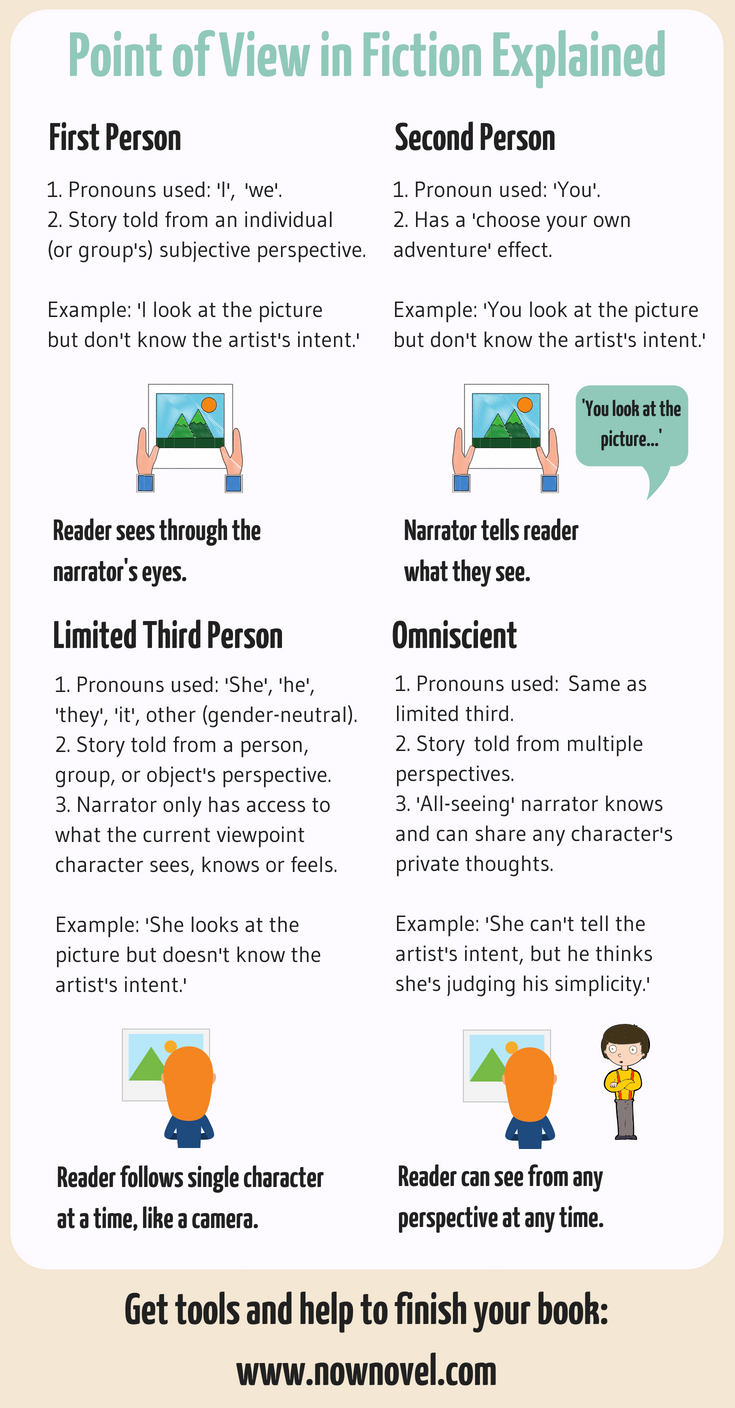Mastering Point of View: Elevate Your Writing
Ever wondered why some stories resonate deeply while others fall flat? The secret often lies in the narrative perspective, the lens through which the story unfolds. Choosing the right point of view (POV) is a crucial decision for any writer, impacting everything from reader immersion to the emotional impact of the narrative.
Selecting the correct POV is akin to choosing the right camera angle for a film. It dictates what the audience sees, hears, and experiences. A poorly chosen perspective can distance the reader, while a skillfully employed POV can draw them in, making them feel intimately connected to the characters and the unfolding events.
The narrative viewpoint isn’t merely a technical element; it's a powerful tool that shapes the entire reading experience. From the intimate whispers of first-person narration to the omniscient sweep of third-person, each perspective offers unique advantages and challenges. Mastering the nuances of POV selection is essential for crafting compelling and impactful stories.
The development of different narrative perspectives has evolved alongside storytelling itself. Early narratives often employed a more distanced, omniscient narrator, reflecting the oral tradition of storytelling where the storyteller acted as a conduit for the tale. As writing became more personal and introspective, the first-person perspective emerged, offering a more intimate and subjective view of the world.
The challenge in selecting a point of view lies in finding the perspective that best serves your story. What voice will most effectively convey your themes and resonate with your intended audience? Should your narrative be filtered through the eyes of a single character, or should you adopt a broader perspective that allows access to the thoughts and feelings of multiple characters? These are the questions that every writer must grapple with when making this critical decision.
First-person employs "I" and allows the reader direct access to the narrator's thoughts and feelings. Third-person limited uses "he" or "she" and focuses on one character's perspective, while third-person omniscient offers a broader view, accessing the thoughts and feelings of multiple characters. Second-person, using "you," directly addresses the reader, immersing them in the narrative as the protagonist.
Choosing the correct perspective offers several benefits. It can enhance emotional impact, create intimacy with the reader, build suspense, and even establish a distinct narrative voice. For example, a first-person narrative in a thriller can heighten the suspense as the reader experiences the protagonist's fear and uncertainty firsthand.
To choose your POV, consider your story's genre, target audience, and desired emotional impact. Experiment with different perspectives to see which one best suits your narrative. Outline your story from different viewpoints to determine which one offers the most compelling narrative arc.
Consider these best practices: match POV to genre conventions, maintain consistency throughout your narrative, use POV shifts sparingly and purposefully, and let your chosen perspective shape the language and tone of your writing.
Examples of successful POV choices include "The Hunger Games" (first-person), "Harry Potter" (third-person limited), and "Pride and Prejudice" (third-person omniscient).
Advantages and Disadvantages of Different POVs
| POV | Advantages | Disadvantages |
|---|---|---|
| First Person | Immediacy, intimacy, strong voice | Limited perspective, potential for bias |
| Third Person Limited | Balance of intimacy and scope | Can feel restrictive if not handled well |
| Third Person Omniscient | Broad scope, access to multiple characters | Can distance the reader, difficult to manage |
Frequently Asked Questions:
1. Can I switch POV within a single story? (Generally avoid it unless there's a strong narrative reason.)
2. Which POV is best for beginners? (Third-person limited is often a good starting point.)
3. How do I choose between first and third person? (Consider the intimacy and scope you want to achieve.)
4. What are the common pitfalls of using second person? (It can feel gimmicky if not used effectively.)
5. How can I make my first-person narrator reliable? (Be consistent in their voice and actions.)
6. Is omniscient POV outdated? (No, it can be effective for certain types of stories.)
7. How do I avoid head-hopping in third person? (Stick to one character's perspective per scene or chapter.)
8. Can POV impact the pacing of my story? (Yes, different POVs can create different pacing effects.)
One trick for choosing POV is to write a sample scene from different perspectives. This can help you discover which one feels most natural and effective for your story.
Choosing the correct narrative perspective is a foundational element of strong writing. It shapes how your story is perceived, influencing the emotional impact and reader engagement. By understanding the nuances of first person, second person, and third person, and by carefully considering the advantages and challenges of each, you empower yourself to craft compelling and resonant narratives. Take the time to experiment, analyze, and refine your POV choices. Your readers will thank you for it. Don't just tell your story – choose the best lens to reveal it. Dive into your narrative and discover the power of perspective.
Dryer vent pipes the metal advantage
Unlocking kwai shing east shopping centre your guide to a hong kong gem
Unleash your inner fashionista a guide to gacha club outfit inspiration














